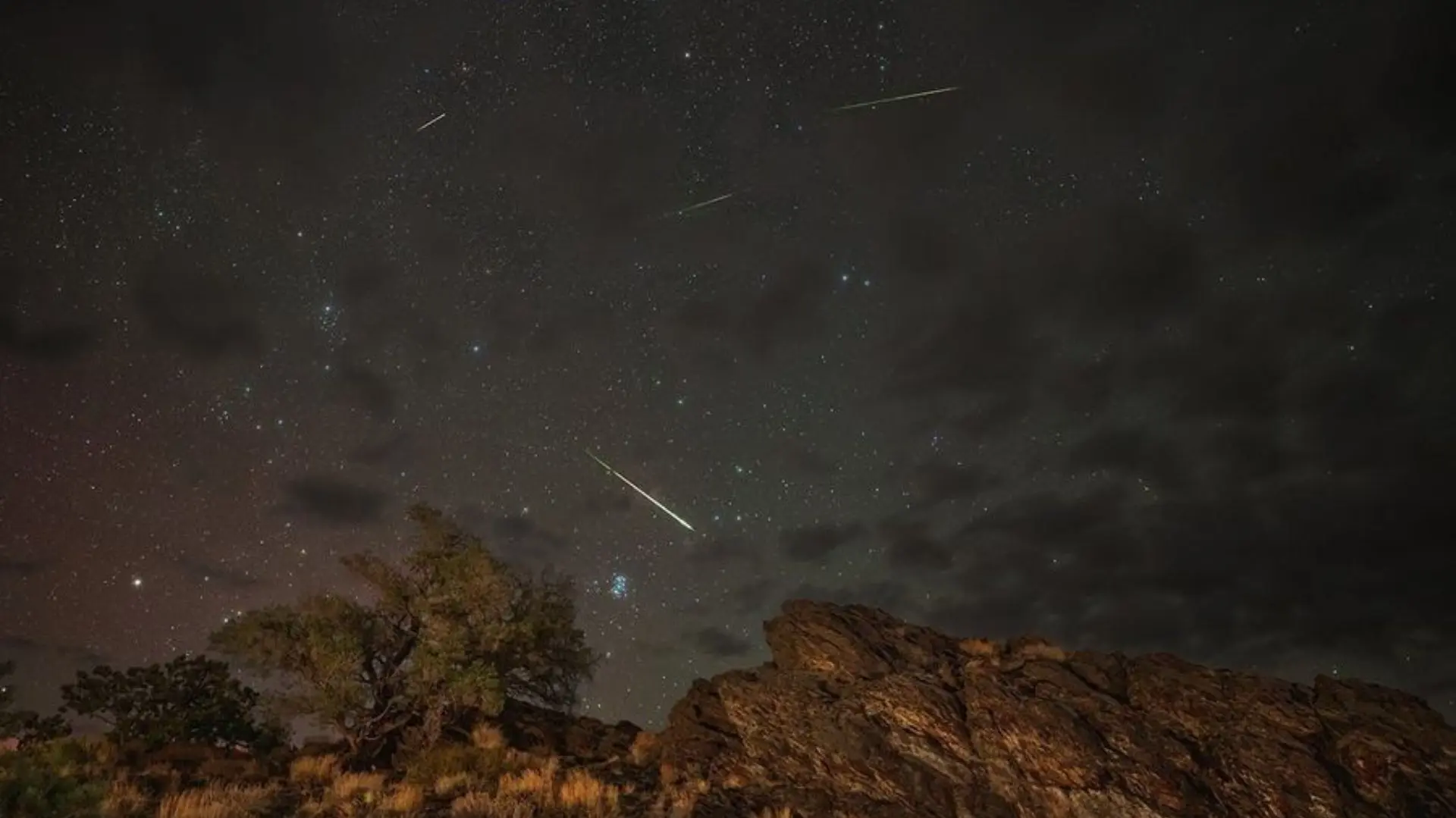Perseid meteor shower 2025: Here's where and when you can watch it
-
 Perseid meteor shower © NASA
Perseid meteor shower © NASAThe Perseid meteor shower connects with the comet Swift-Tuttle. It happens every year between mid-July and late August. It looks like the meteors come from the constellation Perseus and spread out into Cassiopeia and Camelopardalis.
The Perseids happen when Earth moves through the comet 109P/Swift-Tuttle's debris. They are known for the beautiful meteor streaks they leave behind. It is best to find a place with no light pollution, preferably away from cities.
The name "Perseids" comes from Greek mythology, where it refers to the sons of Perseus. The shower happens when Earth passes through Swift-Tuttle's debris cloud, which has been in the stream for about 1,000 years. Some dust from 1865 makes little peaks before the main event.
The peak of the Perseids is between 9 and 14 August, with up to 60 meteors per hour visible. They are best seen in the Northern Hemisphere, especially in the pre-dawn hours.
The meteors in the Perseid meteor shower can come from any part of the sky. People can usually see these after midnight.
The best time to see meteors is between midnight and dawn, when the Earth is spinning.
Perseid Meteor Shower 2025: More about how to watch it and where to watchIn this, the meteor shower 2025, skywatchers get a chance to observe shooting stars and fireballs. Although the peak will occur on August 12-13, the bright full moon will likely obscure the view, making the nights before the peak, especially those around July 24, the best time to see it clearly.
Finding a location far from city lights will be ideal. Ideal spots include parks, countryside locations, or any designated dark-sky areas.
Those watching from their backyard need to turn off any outdoor lights to improve their chances of a meteor watch.
The Perseid meteor shower 2025 runs from July 17 to August 23, but the best nights are the peak nights. The best time to see the meteors more clearly is before the moon gets too bright, especially around the New Moon on July 24.
Some meteors can be seen before 10 or 11 PM. However, most of the time they can be seen after midnight.
While equipment such as telescopes or binoculars isn’t necessary, they may enhance the view.However, the meteors can be seen with the naked eye and are best observed while lying on back, looking up at the vast expanse of the night sky.
The Perseids Meteor Shower 2025 is going to happen in August
From August 9 to 14, the Perseid meteor shower takes place. Meteors can come at a rate of 60 or more per hour at their strongest.
A meteor can be seen anywhere in the sky. However, it's best to be in the Northern Hemisphere.
As they reach 80 km (50 miles), most Perseids burn up. Stars and meteors can sometimes be seen before midnight.
They often leave long, bright trails or fireballs behind them. So, putting out all lights can actually help in watching the meteor shower better.
The comet Swift-Tuttle is linked to the Perseid meteor shower, which has a lot of meteors. Each year, you can see it from the middle of July to the end of August.
The meteors look like they are coming from the constellation Perseus. It is expected to reach the constellations Cassiopeia and Camelopardalis.
The name "Perseids" comes from the Greek word Perseidai, sons of Perseus. This shower sends a stream of Swift-Tuttle comet debris through the Earth, via Perseid cloud.
As it goes around the sun every 133 years, the comet sends particles into the cloud. These bits and pieces have been in the cloud for around a thousand years.
But the dust that was let out in 1865 makes a small peak appear before the main event.
As Earth's gravity is pulling on it, the cloud is about 0.1 AU wide and 0.8 AU long. This show can be seen from the middle of July to the end of August.
It will be the busiest from August 9 to 14. At its strongest, the shower can shoot out 60 or more meteors an hour.
TOPICS: Perseid meteor, meteor